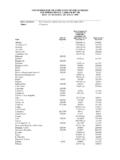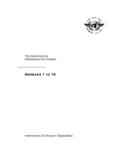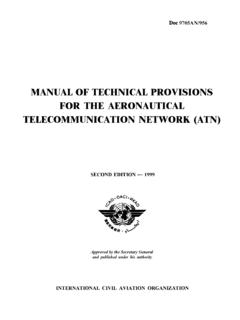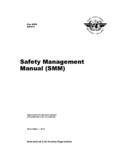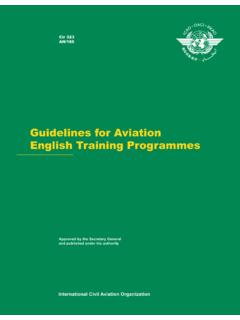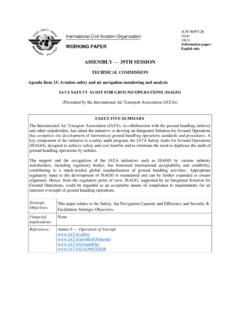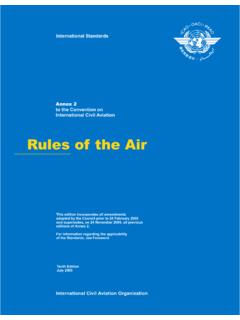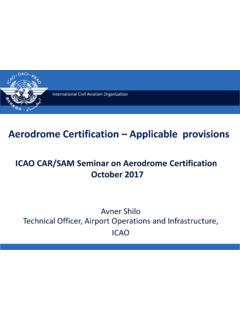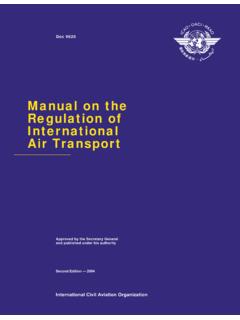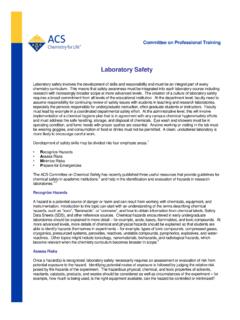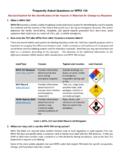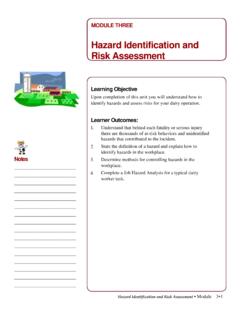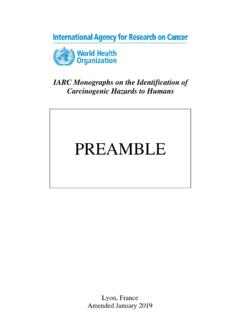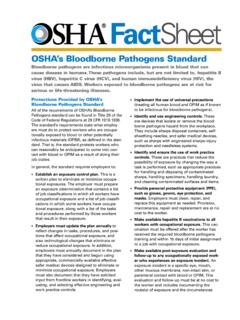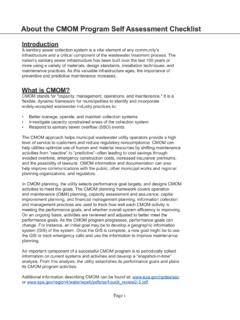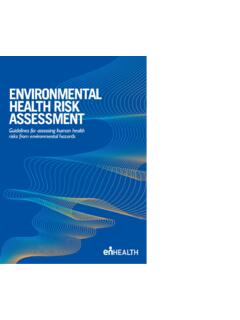Transcription of Fault Tree Analysis (FTA) and Event Tree Analysis (ETA)
1 NEBOSH National Diploma - Unit A | Managing Health and Safety RRC Training Element A3 | Identifying Hazards, Assessing and Evaluating Risks 1 Fault Tree Analysis (FTA) and Event Tree Analysis (ETA) It is easy to get confused between these two techniques. Indeed, the two are in fact complimentary (and are often used together) but focus on opposite sides of an undesired Event . The diagram below shows how they fit together: This is sometimes called a bow-tie model (because it looks like one) and when complimentary FTAs and ETAs are used, it s called the bow-tie technique. The diagram only shows a single undesired Event ; in reality, multiple causes can lead to many different events initially, each then escalating with multiple consequences.
2 You can analyse each Event with FTA and ETA. In summary, FTA is concerned with analysing faults which might lead to an Event , whereas ETA is interested in stopping it escalating. Both can be applied qualitatively or, if you have the data, quantitatively. Fault Tree Analysis (FTA) In many cases there are multiple causes for an accident or other loss-making Event . Fault tree Analysis is one analytical technique for tracing the events which could contribute. It can be used in accident investigation and in a detailed hazard assessment. The Fault tree is a logic diagram based on the principle of multi-causality, which traces all branches of events which could contribute to an accident or failure.
3 It uses sets of symbols, labels and identifiers. But for our purposes, you ll really only use a handful of these, shown below: NEBOSH National Diploma - Unit A | Managing Health and Safety 2 Element A3 | Identifying Hazards, Assessing and Evaluating Risks RRC Training Even then, you ll see variations of these symbols in use. A Fault tree diagram is drawn from the top down. The starting point is the undesired Event of interest (called the top Event because it gets placed at the top of the diagram). You then have to logically work out (and draw) the immediate contributory Fault conditions leading to that Event . These may each in turn be caused by other faults and so on.
4 It could be endless (though, in fact, you will naturally have to stop when you get as far as primary failures). The trickiest part of the whole thing is actually getting the sequence of failure dependencies worked out in the first place. Let s look at a simple example to illustrate the point. NEBOSH National Diploma - Unit A | Managing Health and Safety RRC Training Element A3 | Identifying Hazards, Assessing and Evaluating Risks 3 The above figure shows a simple Fault tree for a fire. EXAM HINT: Don t worry about getting the symbols precisely right when drawing Fault trees by hand; you can make your intentions quite clear enough simply by writing AND or OR in the appropriate logic gate as well.
5 Similarly, so long as you describe the Fault /failure in a box, don t worry unduly about the (sometimes subtle) distinction between what should go in rectangles and circles. For the fire to occur there needs to be: Fuel. Oxygen. An ignition source. Notice we use an AND gate to connect them here because all three need to be present at the same time to allow the top Event . The example shows that, in this scenario, there happen to be three possible sources of fuel and three possible sources of ignition. An OR situation applies in each case, because it would only need one of these to be present. The example also shows a single source of oxygen ( the atmosphere).
6 In order to prevent the loss taking place, we would first examine the diagram for AND gates. This is because the loss can be prevented if just one of the conditions is prevented. Fault trees can also be quantified. Let s try this on the same example. From previous experience, or as an estimation, a probability for each of the primary failures being present or occurring can be established, shown below (these are purely illustrative): NEBOSH National Diploma - Unit A | Managing Health and Safety 4 Element A3 | Identifying Hazards, Assessing and Evaluating Risks RRC Training (We ve assigned a probability of 1 for Oxygen being present, as it always is in the surrounding atmosphere).
7 We can then use two well-established rules of combination of these probabilities and progress up the diagram to get at the probability of the top Event (fire) occurring. Essentially we: Add the probabilities which sit below an OR gate (this isn t strictly correct, but is a rare Event approximation). Multiply the probabilities which sit below an AND gate So, in this example, combining probabilities upwards to the next level gives: Probability of FUEL being present = + + = Probability of OXYGEN being present = 1 Probability of IGNITION being present = + + = NEBOSH National Diploma - Unit A | Managing Health and Safety RRC Training Element A3 | Identifying Hazards, Assessing and Evaluating Risks 5 Updating the diagram (and only showing the relevant part): Moving up again, we can now calculate the probability of the top Event .
8 These faults are below an AND gate, so we multiply the probabilities, giving x 1 x = The top of the fully quantified Fault tree then looks like this: Exam hint: to gain maximum marks, make sure that you show all your working when quantifying a Fault tree. The above was a simple example. Below is another, more complicated Fault tree (not quantified). It uses a much wider range of symbols too. Note that each route is developed until it ends at a primary Event , or to a point where we consider that we have reached an equivalent situation. You should be able to make some possible improvements to this Fault tree. The author seems to think that smoking is a major cause of ignition.
9 There are probably many more examples of ignition causes that have not been considered. If you are interested in further reading on this subject, you might like to refer to BS EN 61025:2007 Fault Tree Analysis . NEBOSH National Diploma - Unit A | Managing Health and Safety 6 Element A3 | Identifying Hazards, Assessing and Evaluating Risks RRC Training Simplified Fault Tree for the Top Event : "Explosion in Paint Spraying Booth" Event Tree Analysis (ETA) This is a complimentary technique to FTA but defines the consequential events which flow from the primary initiating Event . Event trees are used to investigate the consequences of loss-making events in order to find ways of mitigating, rather than preventing, losses.
10 Stages in carrying out Event tree Analysis : Explosion in paint spraying booth Flammable paint spray in explosive concentration Source of ignition present Paint continues to flow Extractor fan fails to operate Flames present near booth Electrical spark present Lit cigarette in or near booth Electricity supply fails Mechanical failure of extractor fan Electricity company fails to supply electricity Failure of internal electrical circuits Strike of power workers called Breakdown of electricity generation Failure of earthing system Lit cigarette introduced by operative Lit cigarette introduced by another person NEBOSH National Diploma - Unit A | Managing Health and Safety RRC Training Element A3 |
